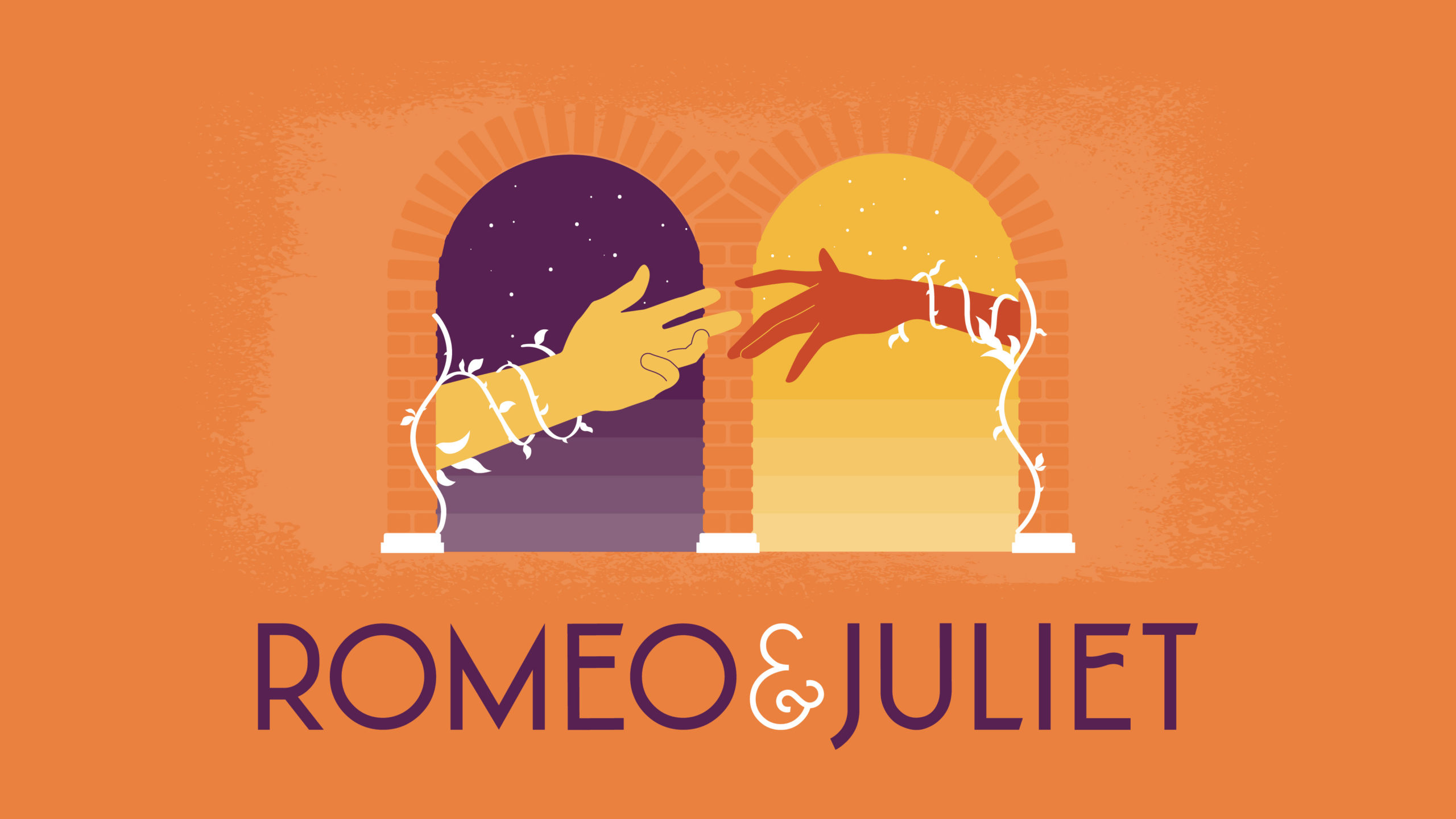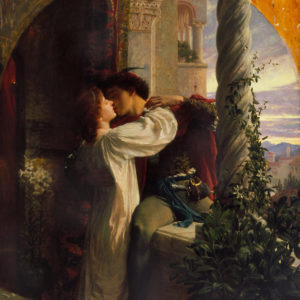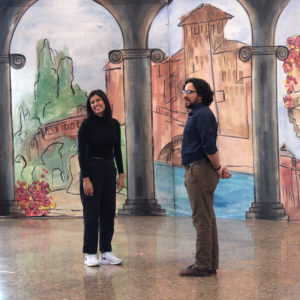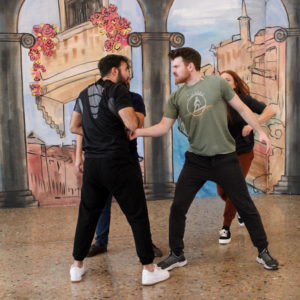Fall in Love with Romeo & Juliet

By: Angelica DiIorio
With Valentine’s Day just around the corner, you might have love and romance on your mind. What better way to celebrate than with one of the most fabled stories, Romeo and Juliet? Every year, our Artists in Residence take touring productions to schools and community venues around Colorado. This winter, we introduce a new production to the Opera on Tour program, Romeo & Juliet.
Learn more about how our Director of the Artist in Residence Program, Cherity Koepke, turned a Shakespearean classic into a short story that retains all the intensity of the originals. Join us as we break down the creation of this abridged opera through a Q&A with Cherity.
Learn more about bringing Romeo & Juliet to your students>>
Why was the classic story of Romeo & Juliet selected for Opera on Tour?

Source: Southampton City Art Gallery
I fell in love with Shakespeare at a very young age. I think the language is so beautiful and impactful, and I even minored in classical theatre. After graduation, I trained with the Royal Shakespeare Company. I got to work in masterclasses with Ian McKellen and sat in on a class with Judy Dench and Patrick Stewart. When I had the opportunity to envision a new touring production for Opera Colorado’s Opera On Tour program, I knew I wanted to bring Shakespeare and opera together. I chose Romeo & Juliet because Charles Gounod’s opera Roméo et Juliette is very faithful to the original Shakespeare. The libretto even takes lines directly from the original text. Also, the story is timeless and has content we still need to talk about. This story is still read in schools, which gives it relevance in classrooms where we perform, developing a connection with students.
Even though Gounod’s opera and the Shakespearean text are similar, you still had to decide which style to prioritize. How did you make that decision?
The first thing I had to decide was how to combine the opera and the play’s text in a way that felt natural, otherwise it can be very jarring when the music disappears. I lay it all out and find the best way to transition between the opera and the play. If it doesn’t work, or fit in the right way, then I try a different approach. I also have to adjust for the characters and have them fit with the voices of the six Artists in Residence. For example, in the opera, there is the character of Stéphano who replaces Benvolio and Grégorio. Since Stéphano is not in the Shakespearean text, his entrance into the story for an aria needs to make sense and flow seamlessly.
It is also a stylistic choice when to use the opera or the Shakespearean text. In the balcony scene, both the opera and the text are used, which makes the scene feel even more special and dreamlike. The final scene is taken more from the play than the opera. This is because the opera diverges from what Shakespeare wrote and I wanted to stay more faithful to the original plot. Juliet sings a grand aria, Romeo sings his final lines, and then there is no more music. I wanted to showcase the opera, but also be faithful to Shakespeare’s original text, so we start with opera and end with Shakespeare. It creates a way for the story to come full circle.
Hear a preview of Gounod’s music in Romeo & Juliet.
This is an updated production of Romeo & Juliet. Will there be modern elements included?
Shakespeare himself took huge risks in some of the subject matter he put on stage, so we are taking a risk here as well. He wrote from a modern viewpoint for his time period, so I wanted this piece to be done from today’s viewpoint. When we take this production into schools I think it’s crucial that students see themselves represented. They may not see themselves in someone who wears a tunic and tights, but if they see the character in something they might buy, say at Target, that’s more relatable. Modern technology also comes into this updated version. We don’t write letters any more, we text, we facetime, so that’s got to be part of the story too if we want to bring it into modern day.
I wanted to show that it is a timeless story, so putting it in today’s setting really shows how relevant the messages still can be. There are many elements of this story that we see in today’s world: a grudge between families, two people who don’t “fit” by society’s standards, people who fall in love and dare to be together despire challenges, and people making choices that have drastic outcomes. The language may be old, but the story isn’t.
By bringing in young people who just happen to fall in love, you can show that they are not part of that ancient grudge and old mindset. They do not have the same sensibilities as their elders and they do not care about past hate, they just want to be together.
What is this creation process like for the Artists in Residence?

Photo: Angelica DiIorio
This production is a very exciting experience for the Artists in Residence. These roles can be vocally challenging, so doing a production that’s shorter than the full opera allows them to dive into their characters and really take some risks. It is also such a gift when performers can do dialogue as well as sing, which is unique to this production. The rehearsal process for Romeo & Juliet was different from the ones for the Opera on Tour production of The Pirates of Penzance. We were cracking up during Pirates rehearsals, but that lighthearted approach wasn’t there for Romeo & Juliet because it can’t be. When you’re working on death scenes or really challenging stage combat, there’s almost more at stake. This content has to be approached honestly and with respect in order to due it justice.
How do you think student audiences will react to this opera?

Photo: Angelica DiIorio
This is the riskiest touring production we have done because we’re talking about subject matter that can be difficult regardless of if we’re in a school or in a community venue.
I have some experience with riskier productions from when we abridged Carmen. I was incredibly nervous taking the opera to schools and did not know how students would react to the content. Kids are so much more capable of understanding things than we give them credit for if you just present it to them honestly. All they want is to ask questions and know more. I am expecting a similar reaction, especially since many students have already read the play in school. We are very clear with schools about content, but the whole end of the opera is a huge challenge because I don’t get the bells and whistles of a curtain falling so there is less closure.
In both schools and community venues, there is a Q&A with the Artists and Residence after each performance to ask a few lingering questions and process the experience together.
—
Romeo & Juliet is a timeless story that we are excited to share with communities and schools throughout Colorado this winter and spring.
Intrigued? Book a performance for your school or community venue. Contact us by email at education@operacolorado.org or by phone at 303.778.7350.
You can also read the full Guidebook for Romeo & Juliet to learn more>>
Did you know that Opera Colorado offers scholarships for our educational programs? Scholarships are available on a first-come, first-serve basis. To apply, please fill out and return the appropriate application: School Scholarship or Community Scholarship.


